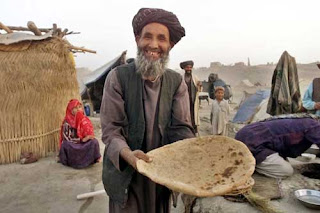Afghanistan war
Afghanistan war – In October 2001, the United States attacked Afghanistan as a starting chapter of the ‘War on terrorism’, which still continues today. The ultimate goal was to replace the Taliban government, and to find apparent 9/11 mastermind and Al-Qaeda member Osama Bin Laden. Many European countries assisted the US in what was called ‘Operation Enduring Freedom’.
During the war, extensive damage was done to the environment, and many people suffered health effects from weapons applied to destroy enemy targets. It is estimated that ten thousand villages, and their surrounding environments were destroyed. Safe drinking water declined, because of a destruction of water infrastructure and resulting leaks, bacterial contamination and water theft. Rivers and groundwater were contaminated by poorly constructed landfills located near the sources.
Afghanistan once consisted of major forests watered by monsoons. During the war, Taliban members illegally trading timber in Pakistan destroyed much of the forest cover. US bombings and refugees in need of firewood destroyed much of what remained. Less than 2% of the country still contains a forest cover today.
Bombs threaten much of the country’s wildlife. One the world’s important migratory thoroughfare leads through Afghanistan. The number of birds now flying this route has dropped by 85%. In the mountains many large animals such as leopards found refuge, but much of the habitat is applied as refuge for military forces now. Additionally, refugees capture leopards and other large animals are and trade them for safe passage across the border.
Pollution from application of explosives entered air, soil and water. One example is cyclonite, a toxic substance that may cause cancer. Rocket propellants deposited perchlorates, which damage the thyroid gland. Numerous landmines left behind in Afghan soils still cause the deaths of men, women and children today.
Baghlan province is a beautiful province of Afghanistan. It is located in the north of Afghanistan. This province is bordering with Nangarhar province and the capital of this province is Pul-e-Khumri. Baghlan has some beautiful mountains and green places. The people of this province are very kind and brave.
WILDLIFE IN AFGHANISTAN
Unfortunately, Afghanistan has had almost no history of conservation efforts. Lack of environmental protection combined with a burgeoning human population entirely dependent upon increasingly scarce natural resources has driven many species of plants and animals to the brink of extinction. Seventy-five species of animals and plants found in Afghanistan have been placed on the IUCN Red List (IUCN, 2000), with 35 species of animals listed as either Vulnerable or Endangered

A recent study by WCS researchers in Afghanistan revealed that snow leopards, Asiatic black bears, gray wolves, and other wildlife species have survived in parts of Afghanistan. Despite ongoing violent conflict in the country, WCS conservationists continue to work with local communities to protect the nation's natural heritage.

Recent camera trap images from the rocky terrain of Afghanistan’s central highlands have revealed a surprise: a Persian leopard, an apex predator long thought to have disappeared from the region.
In a series of images that provides indisputable proof that the big cat persists in the country’s interior, a big adult leopard can be seen prowling around the pathway (directly in the camera trap’s field of view) and investigating the camera itself, appearing to threaten it with canines exposed.








Comments
Post a Comment